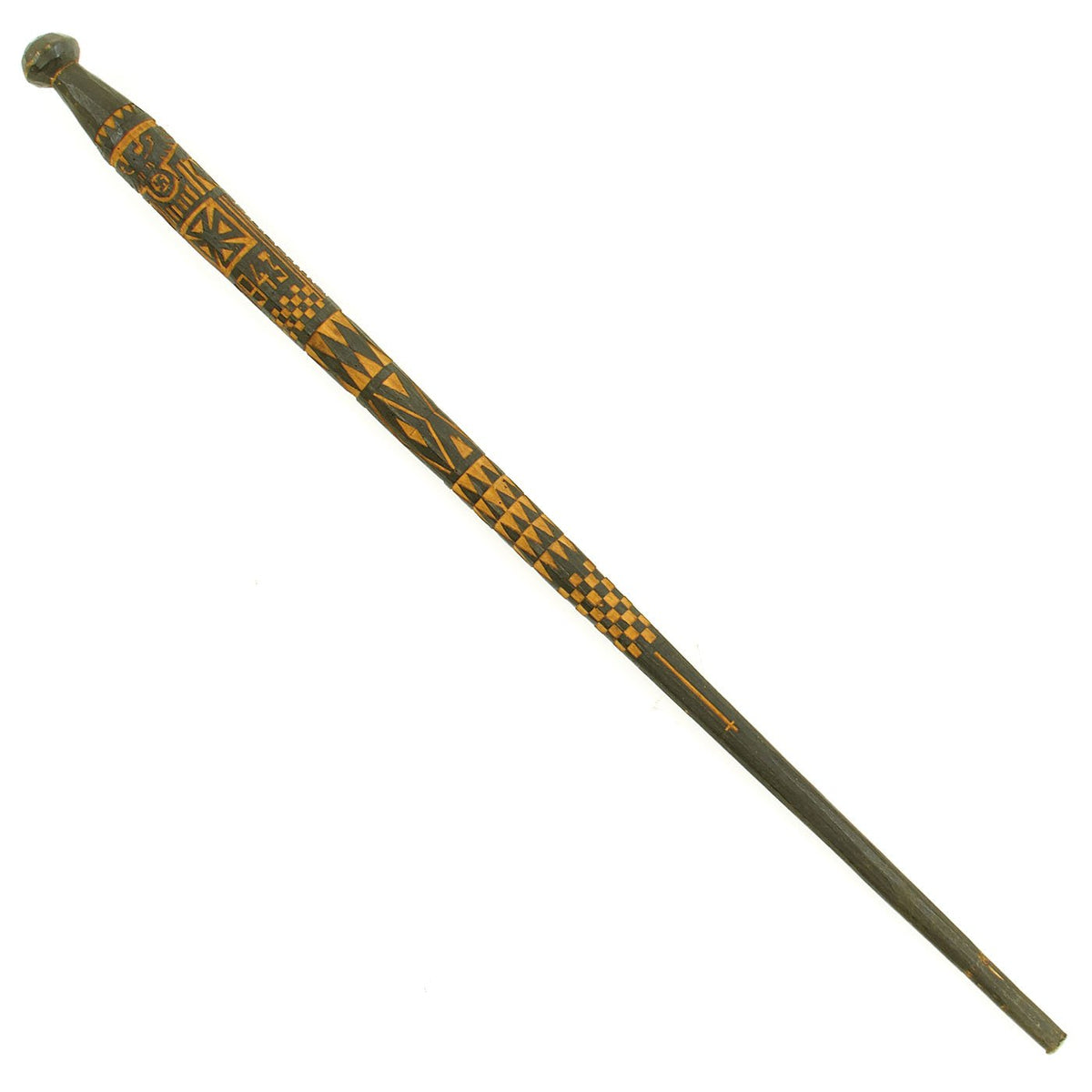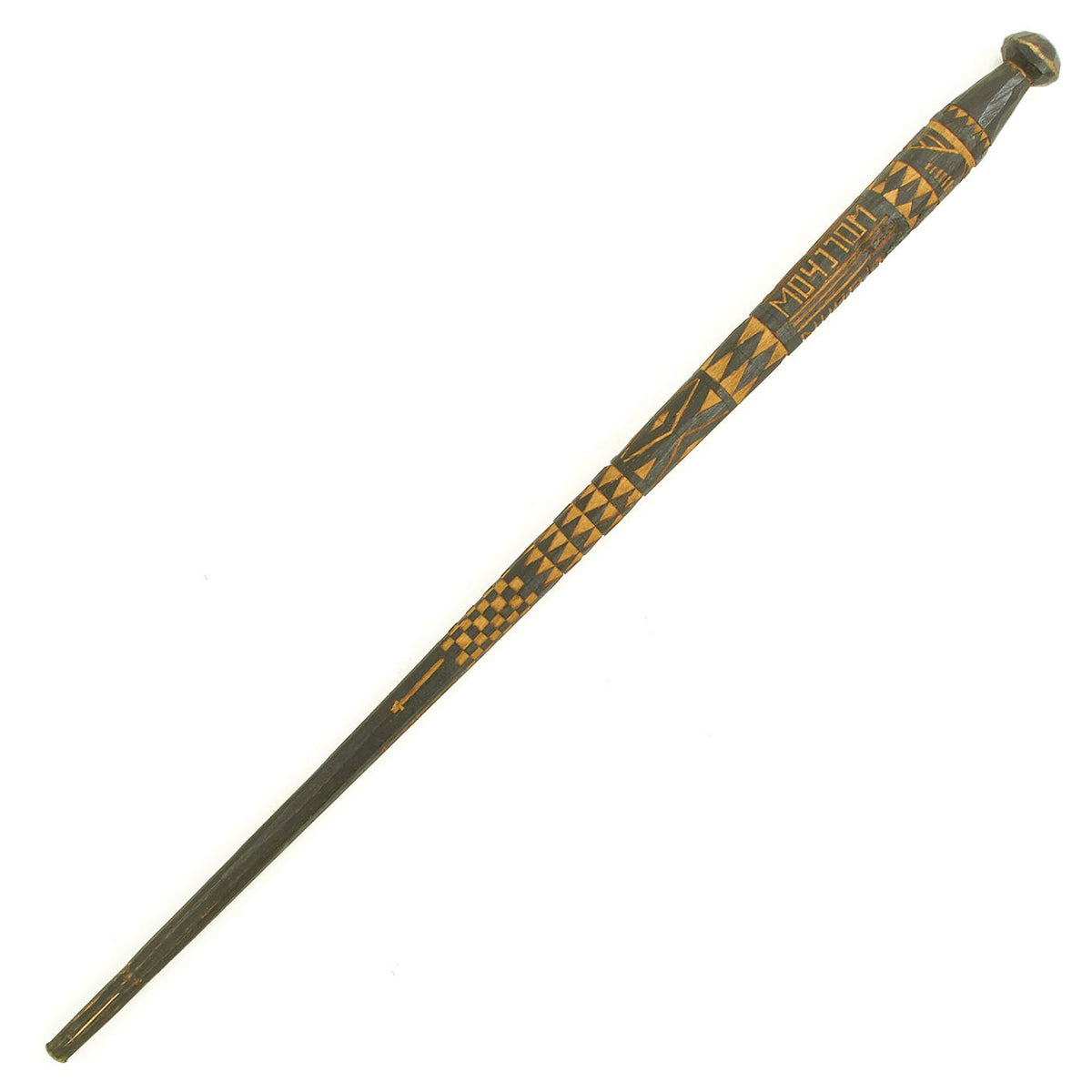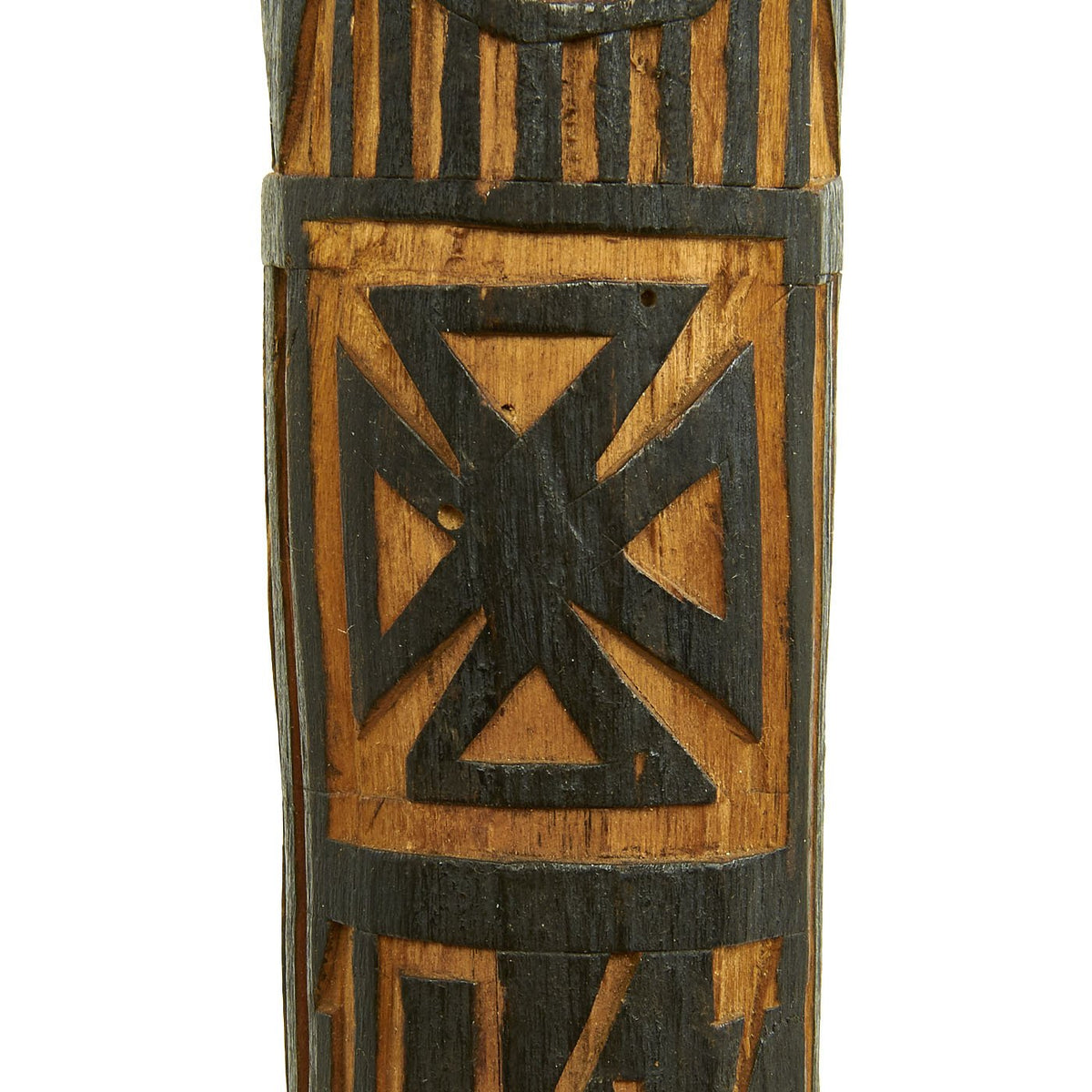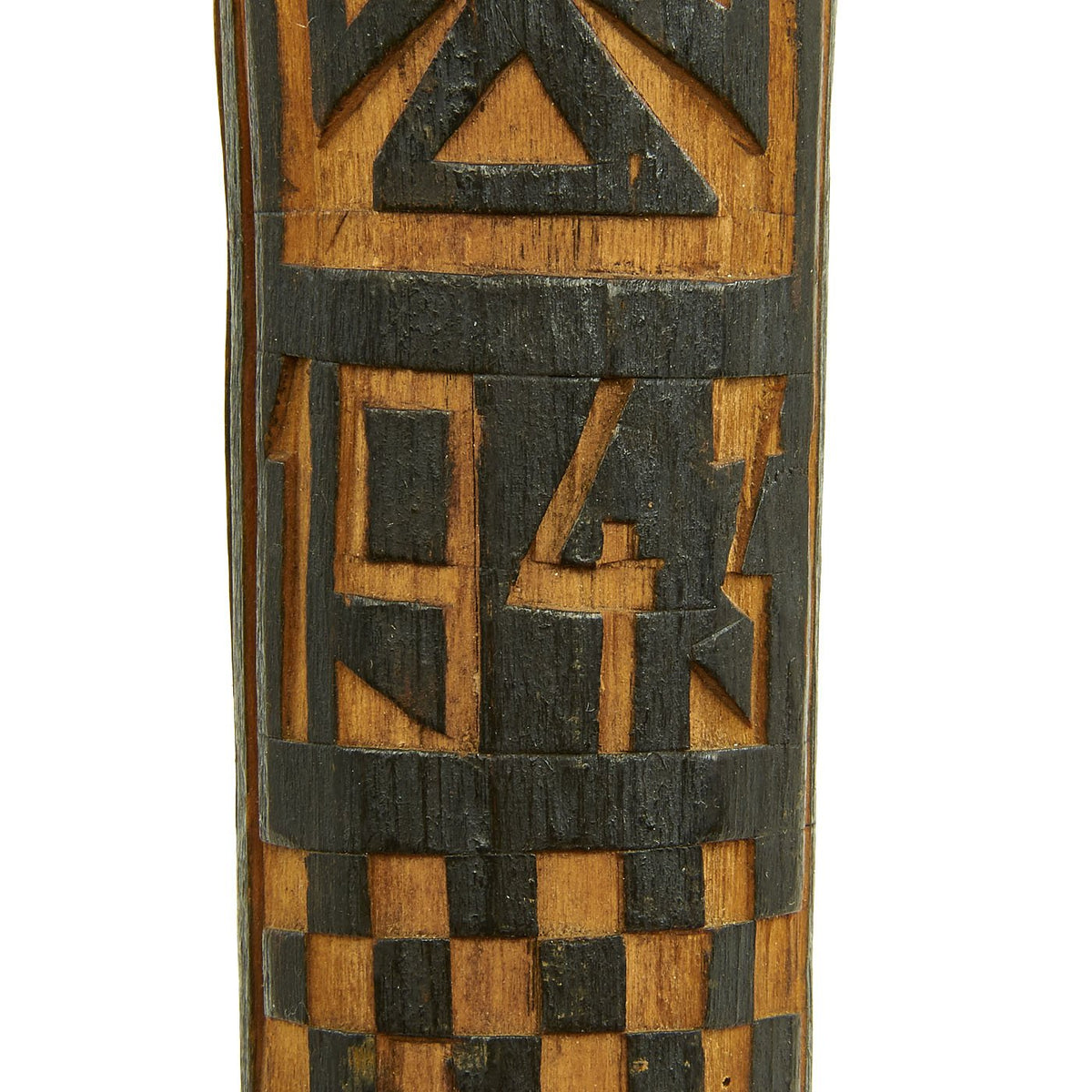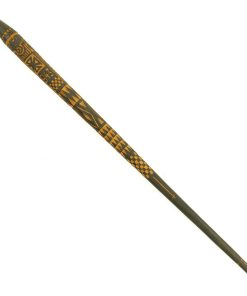Original German WWII Eastern Front Hand Carved Wolchow Stock Walking Stick dated 1943 Original Items
$ 325,00 $ 97,50
Original Item: One-of-a-kind. This is an authentic hand carved souvenir walking stick or Wolchow Stock, named after the Wolchow / Volkhov area of the eastern front. This was made by a German Army soldier serving on the Eastern Front during the long periods of inaction. The stick measures 38 1/2 inches tall with a circumference of 5 1/2 inches at its widest point. It features a German Heer Reichsadler Eagle on top of a Swas (Swas) along with a German Tatzenkreuz (“Paw cross” or cross pattée), the symbol used in the Iron Cross and many other German awards and designs. The rest of the stick has lots of designs and other ornamentation.
There are two city names carved into the stick: WOLCHOW and LIUBAN, which are the German names for eastern front areas. The first would be the namesake of these walking sticks, the Russian Volkhov Front area. The second references the Battle of Lyuban, one of the battles on the Volkhov front. There is also the date of 1943 between the two city names, probably the year the stick was made as a memento of their time in Russia.
The stock is in very good condition, with a lovely aged patina to the carved out areas. There is a small amount of woodworm damage, but we cannot tell if this happened before the stick was carved or after.
This is a fantastic personalized piece of historical remembrance from one of the most brutal theaters of war in world history. Ready to display!
The Eastern Front of World War II was a theater of conflict between the European Axis powers and co-belligerent Finland against the Soviet Union (U.S.S.R.), Poland and other Allies, which encompassed Central Europe, Eastern Europe, Northeast Europe (Baltics), and Southeast Europe (Balkans) from 22 June 1941 to 9 May 1945. It has been known as the Great Patriotic War (Russian: Великая Отечественная война, Velikaya Otechestvennaya Voyna) in the former Soviet Union and modern Russia, while in Germany it was called the Eastern Front (German: die Ostfront), or the German-Soviet War by outside parties.
The battles on the Eastern Front of the Second World War constituted the largest military confrontation in history. They were characterized by unprecedented ferocity, wholesale destruction, mass deportations, and immense loss of life due to combat, starvation, exposure, disease, and massacres. The Eastern Front, as the site of nearly all extermination camps, death marches, ghettos, and the majority of pogroms, was central to the Shoah. Of the estimated 70–85 million deaths attributed to World War II around 30 million occurred on the Eastern Front. The Eastern Front was decisive in determining the outcome in the European theater of operations in World War II, eventually serving as the main reason for the defeat of NSDAP Germany and the Axis nations.
The two principal belligerent powers were Germany and the Soviet Union, along with their respective allies. Though never engaged in military action in the Eastern Front, the United States and the United Kingdom both provided substantial material aid in the form of the Lend-Lease to the Soviet Union. The joint German–Finnish operations across the northernmost Finnish–Soviet border and in the Murmansk region are considered part of the Eastern Front. In addition, the Soviet–Finnish Continuation War may also be considered the northern flank of the Eastern Front.
Fast Shipping with Professional Packaging
Thanks to our longstanding association with UPS FedEx DHL, and other major international carriers, we are able to provide a range of shipping options. Our warehouse staff is expertly trained and will wrap your products according to our exact and precise specifications. Prior to shipping, your goods will be thoroughly examined and securely secured. We ship to thousands clients each day across multiple countries. This shows how we're dedicated to be the largest retailer on the internet. Warehouses and distribution centres can be located throughout Europe as well as the USA.
Note: Orders with more than one item will be assigned a processing date depending on the item.
Before shipping before shipping, we'll conduct a thorough inspection of the items you have ordered. Today, the majority of orders will be delivered within 48 hours. The delivery time will be between 3-7 days.
Returns
The stock is dynamic and we cannot completely manage it because multiple stakeholders are involved, including our factory and warehouse. So the actual stock may alter at any time. It's possible that you may not receive your order once the order has been made.
Our policy is valid for a period of 30 days. If you don't receive the product within 30 days, we are not able to issue a refund or an exchange.
You can only return an item if it is unused and in the same state as the day you received it. You must have the item in its original packaging.
Related products
Uncategorized
Uncategorized
Uncategorized
Australian WWII Owen MK1 Machine Carbine SMG Custom Fabricated Replica with Sling Original Items
Uncategorized
Angolan Rebel 1970s era 60mm Inert Display Mortar from Angolan Civil War Original Items
Uncategorized
Uncategorized
Uncategorized
Uncategorized
Uncategorized
Uncategorized
Uncategorized
Uncategorized
Uncategorized
Armored Burgonet Helmet & Polearm from Scottish Castle Leith Hall Circa 1700 Original Items
Uncategorized
Uncategorized
Uncategorized
Uncategorized
